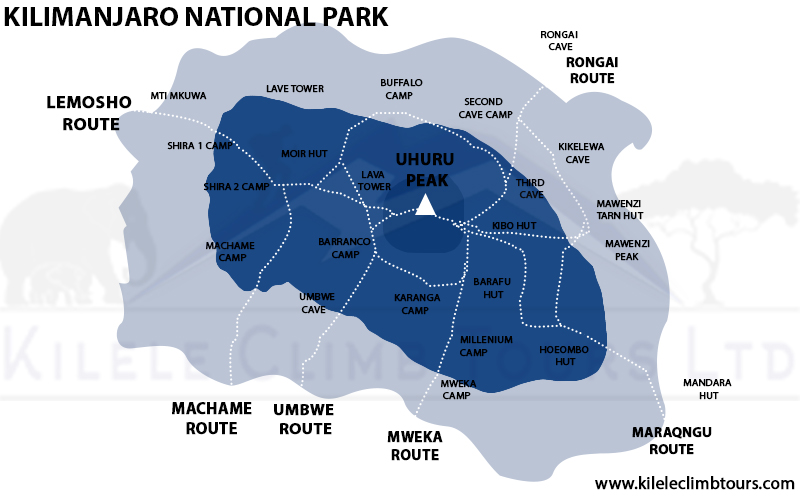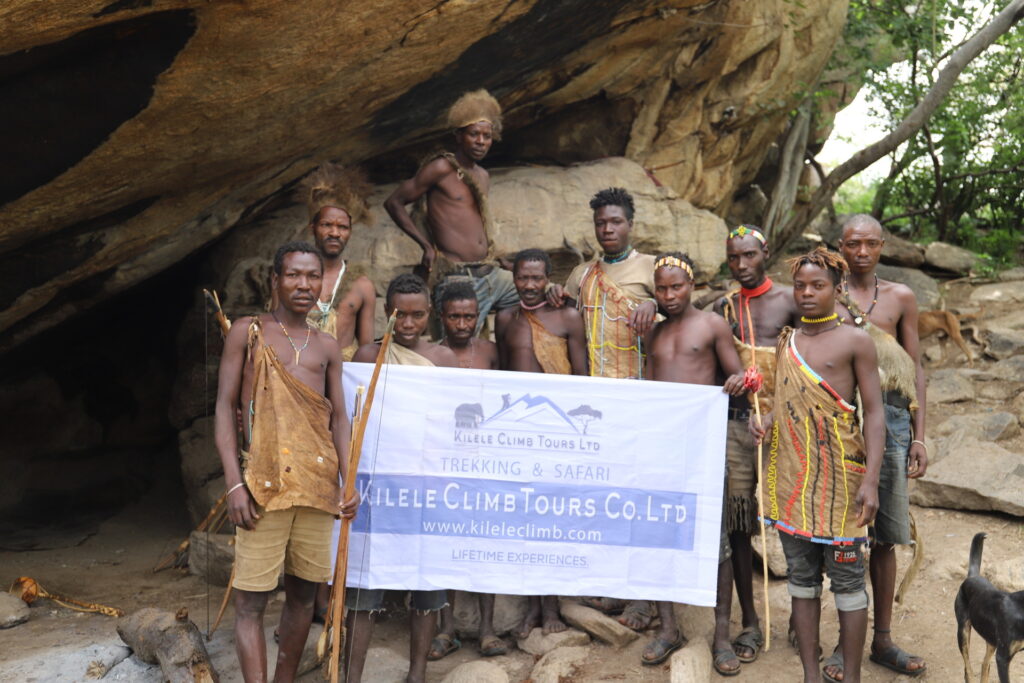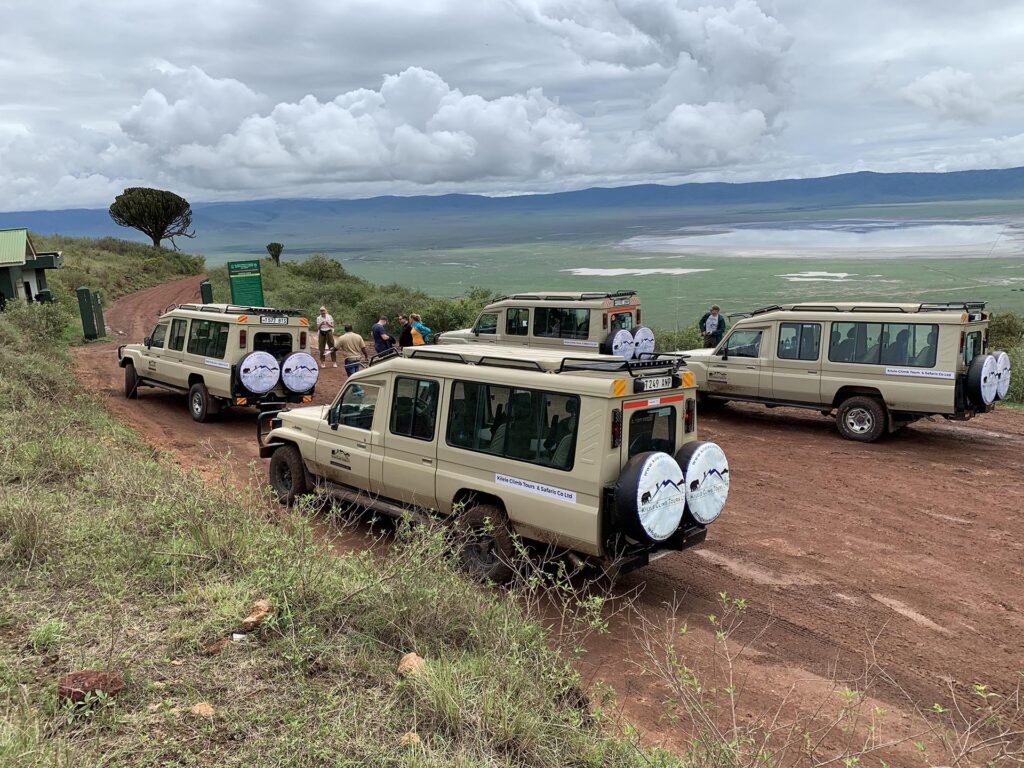Mount Kilimanjaro National Park
The Roof of Africa
Kilimanjaro National Park
The highest mountain in Africa, snow-capped, and the world’s highest free-standing volcano. It comprises of two dormant volcanoes (Kibo 5,895m/19,340ft a.m.s.l and Mawenzi 5,149m/16,893ft a.m.s.l) and one extinct volcano (Shira 3,962m/12,998ft a.m.s.l) respectively. The origin of the word is not well known but it is said to be a combination of the Swahili word Kilima meaning “Mountain” and the KiChagga word Njaro, loosely translated as “Whiteness” giving the name “White Mountain”.
Its size is 1,712Km2 and was declared a National Park in 1973, officially opened for tourism in 1977, declared a World Heritage Site by UNESCO in 1987, and a Natural Wonder of Africa in 2013. Climbing to the top which is far up into the sky it’s a lifetime experience that no one can forget.
Info About Kilimanjaro National Park
- Area: 1,688 km² /652 sq. Mi
- Established: 1973
- Location: Kilimanjaro Region, Tanzania
- Distance & Drive Time: Kilimanjaro International Airport – about 41km/25mi
Climate
There are two rainy seasons in a year. The wet season is from March to May during which it rains around the mountain base and snow accumulates on its peak.
The dry season is from late June through September during which the nights are cool and the days completely clear.
The park is located at an altitude between 1700 m to 5895 meters with annual average rainfall ranging from 828 mm in the alpine desert to 2500 mm in the Montane forest.
Getting there
The park can be accessed by road or flight via Kilimanjaro International Airport – about 45km to the west. The Park Headquarters and one of the ascending gates are at Marangu, about 41Km from Moshi town and 86km from Kilimanjaro International Airport. The other seven gates of Rongai, Machame, Londorosi, Lemosho, Kilema, Mweka, and Umbwe are located around the mountain base and can be reached by road.
Attractions
The Park is endowed with a diverse variety of attractions ranging from terrestrial wilderness to permanent glaciers on the mountain peaks.
Three peaks
Kibo Peak
The highest peak (5,895m) on Mount Kilimanjaro, is covered by snow throughout the year despite being close to the equator. Conquering this peak is an adventure of a lifetime.
Mawenzi Peak
Is the second highest peak which forms Mount Kilimanjaro 5,149m. It is rugged and maintains the features of glaciation
Shira peak
With an altitude of 3,962m, is the oldest peak that collapsed and forms a Shira plateau with outstanding scenic beauty on the mountain with several kinds of migratory large mammals such as buffaloes, elephants, and especially elands.
Zonation of Vegetation
Five eco-climatic zones take you to the equivalent of a trip from the equator to the arctic in a brief tour. As one climbs Kilimanjaro, vegetation and weather change in response to the changing elevation from the montane forest, heath and moorland, alpine desert, and the summit zone (arctic). The mountain peak is covered by snow all year-round
Montane Forest
A wide band of exceptionally beautiful montane forest encircles the whole of Kilimanjaro from about 1800 –2800m. The forest zone is worth a visit even if you are not climbing to the peaks. Marangu nature trails in particular take you through this forest belt which supports several plant species, including endemic plants like Impatiens Kilimanjari.
Lauwo Waterfall
Located along Marangu route 2.8Kms provides a spectacular experience while enjoying walking inside the thick montane forest.
Maundi Crater
Located just 15 minutes’ walk past Mandara huts on the Marangu route the crater provides a panoramic view of Lakes Chala, Jipe and Nyumba ya Mungu, all of which derive their waters from the Majestic Kilimanjaro.
Kifinika Cultural Site
This is a site along the Marangu route that is sacred by the local Chagga people. Historically, the site was used for cultural rituals.
Birds and Animals
The park harbors a total number of 140 species of mammals; 7 primates, 25 carnivores, 25 antelopes, 24 species of bat, and 179 bird species
Activities
Mountain Climbing to the Summit
Climbing to the Kibo peak takes 5 to 8 days depending on the route. The more days, the higher the possibility to conquer the summit. Six mountain trails can take a climber to the highest point in Africa, each route offering different attractions and challenges.
Mountain Cycling
Tourists have a chance to cycle inside the park. There are two routes, one for summit-bound visitors (Kilema route) and the second one for non-summit visitors (Shira plateau). These routes are equipped with picnic sites and resting points.
Mawenzi Technical Climbing
Mawenzi is the second-highest peak on Mount Kilimanjaro. Technical climbers can hike the present seven sub-peaks enjoying the view of cliffs, the complex gullies, and rock faces.
Paragliding
Tourists can fly from the top of Mount Kilimanjaro and tourists may use parachutes or wingsuits while undertaking this activity
Non-Summit Bound Climbers
Activities for non-summit bound climbers include:
- Visit the waterfalls (Lauwo)
- Visiting the Shira Plateau
- Watching wildlife including high altitude birds
- Walking through the Mountain Forest
- Day walk to Maundi crater in the park, cultural sites such as Kifunika








